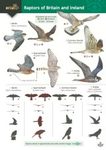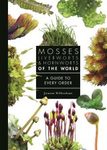![Messages from an Owl Messages from an Owl]()
Click to have a closer look
About this book
Contents
Customer reviews
Related titles
About this book
A reprint of a classical work in the Princeton Legacy Library, originally published in 1996.
When zoologist Max Terman came to the rescue of a great horned owlet in a Kansas town park, he embarked on an adventure that would test his scientific ingenuity and lead to unprecedented observations of an owl's hidden life in the wild. In Messages from an Owl, Terman not only relates his experiences nursing the starving owlet, "Stripey", back to health and teaching it survival skills in his barn, but also describes the anxiety and elation of letting a companion loose into an uncertain world. Once Terman felt that Stripey knew how to dive after prey, he set the owl free. At this point his story could have ended, with no clue as to what the young bird's fate would be – had it not been for Terman's experimentation with radio tags. By strapping the tags to Stripey, he actually managed to follow the owl into the wild and observe for himself the behavior of a hand-reared individual reunited with its natural environment.
Through this unique use of telemetry, Terman tracked Stripey for over six years after the bird left the scientist's barn and took up residence in the surrounding countryside on the Kansas prairie. The radio beacon provided Terman with information on the owl's regular patterns of playing, hunting, exploring, and protecting. It enabled him to witness the moments when Stripey was bantered and mobbed by crows, when other owls launched fierce attacks, and when a prospective mate caught Stripey's eye. On occasional returns to the barn, the owl would follow Terman around as he performed chores, usually waiting for a handout.
Until now, scientists have generally believed that an owl nurtured by humans becomes ill-adapted for meeting the challenges of life in the wild. Terman's research proves otherwise. Stripey surpassed all expectations by becoming a totally independent wild creature. With Terman, however, Stripey remained tame, allowing the author to explore something one rarely sees in owls: a warm interest in humanity. Terman engagingly re-creates this dimension of Stripey as he describes with humor and compassion the daily challenges of probing the life of a "phantom winged tiger".
Contents
Preface
3 Launching New Life
12 Basic Needs and Basic Training
16 Of Genes and Environment
21 Playing Out the Internal Program
27 On Becoming Independent
33 Achieving Adulthood
45 Stretching the Boundaries
51 Both Tame and Wild
55 The Way to the Wild
67 The Testing of a New Owl
73 In Search of a Niche
82 Strange Behavior
88 Kansas Owl
95 Beating the Odds
99 Reunited
109 Home, Sweet Home
115 Hooting
120 Fitness, the Final Measure of Success
125 Hooter-Another Owl, Another Story
139 Capture
144 Of Owls and Science
154 Screechy and the King of the Silo
162 Part of the Web
170 Comparisons and Connections
183 Revelation
201 Postscript
205 Epilogue
221 Appendix: Chronology
229 Suggestions for Further Reading
231 Index
Customer Reviews















































